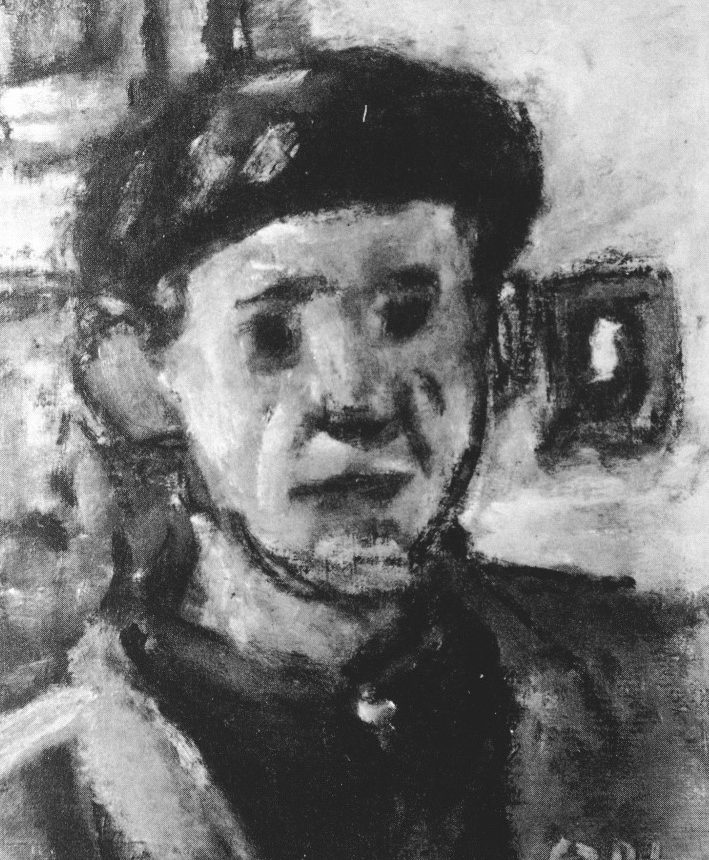Yehuda COHEN
January 2, 2019François Zdenek EBERL
January 2, 2019Béla CZOBEL
BUDAPEST 1883-1976
Béla Czobel’s father was a grain merchant who came from Belus, a small town located near the Moravian border. He moved to Budapest shortly before his son was born. Bela’s grandfather, a decorative painter, encouraged his grandson to adopt an artistic career, which he started in 1902 in the Baia Mare painters’ community in Hungary. The next year, Czobel studied at the Academy of Fine Arts in Munich. There, he got to know Jules Pascin, Rudolf Lévy, and Walter Bondy, who he met again later in Montparnasse.
From 1902 to 1906, Czobel spent the summers in Baia Mare where he met his future wife Isolda Daig, who was also a student attending a painting school. He married her in 1905. Czobel went to Paris for the first time in October 1903. He lived at the Hôtel du Danemark in Montparnasse and attended the Académie Julian, which was then run by Jean-Paul Laurens. He was awarded the first prize for nude study. Czobel met Henri Matisse, took part in the Fauve movement and exhibited alongside Derain, Vlaminck, Braque, and Matisse at the Salon d’Automne dedicated to Fauvism in 1905.
In 1907, Czobel settled at the artist’s colony La Cité Falguiere. He spent every summer in the countryside of his homeland, becoming ambassador of the French avant-garde in Hungary. He was notably invited to Baia Mare by painter Karoly Kernstok. In 1909, Czobel participated in the foundation of a Hungarian avant-garde group named “The Eight” (Nyolcak) and introduced Fauvism in Budapest. In 1913, he was awarded the prize of the International Exhibition of Post-Impressionist painting at the Artists’ House in Budapest. During World War I, Czobel settled in Bergen, a small village in Holland. Between 1919 and 1925, he lived in Berlin and discovered German Expressionism. He left for France in 1925. He lived mainly in Normandy and in the south of France until 1939. During this period, he also spent time in Hungary, notably in 1936 when he went to Szentendre. Many painters, including his second wife Maria Modok, spent time in Szentendre.
During the Occupation, Czobel was in Szentendre. In 1945, he settled there and lived both in France and in Hungary. He died in 1976. His work was exhibited in Szentendre in the Czobel museum, which was inaugurated one year before he died.
Stories of Jewish Artists of the School of Paris 1905-1939
FRENCH-ENGLISH
Capitale des arts, le Paris des années 1905-1939 attire les artistes du monde entier. De cette période de foisonnement, un terme est resté, celui d'Ecole de Paris, qui recouvre une grande diversité d'expression artistique. Dans ce brassage dont Montparnasse est le creuset, un groupe se distingue : celui des artistes juifs venus de Russie, de Pologne et d'Europe centrale. Si leurs styles sont variés, un destin commun les rassemble : ils fuient l'antisémitisme de leur pays d'origine. Certains ont connu la célébrité dès les années 1920, tels Soutine, Lipchitz ou Chagall. D'autres n'ont pas eu le temps ou la chance d'y accéder. Près de la moitié a péri dans les camps de concentration nazis.
From 1905 to 1939, Paris attracted artists from all over the globe as the capital of the art world. This period of artistic proliferation became known as the School of Paris, and includes a great diversity of artistic expression. Within the teeming art world centred on Montparnasse, one group set itself apart: Jewish artists from Russia, Poland, and Central Europe. Although their styles were diverse, they shared the common fate of fleeing anti-Semitic persecutions in their home countries. Some became famous in the 1920s, such as Soutine, Lipchitz, and Chagall, while others did not have the time or the luck to gain renown. Nearly half of these artists died in Nazi concentration camps.





